At Return to Mago this week, an exploration of the healing song of the thrush.

At Return to Mago this week, an exploration of the healing song of the thrush.

Black Fly season is in full swing where I live, and I wanted to pen a tribute to these little monsters.
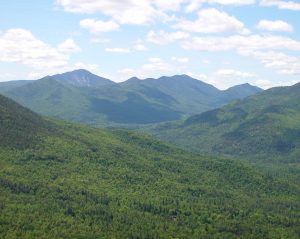
For those who don’t know what Black Flies are, they’re little bugs the size of a gnat that swarm in the early summer and BITE. Each bite swells up and itches. They hang around hikers in deciduous forests on long days when the weather is nice, getting in eyes, noses, and mouths. My first summer in the Adirondacks, I got a few dozen bites around my calves and ankles during a hike, and I was woozy for a couple days from the poisons. For the next ten years, a rash where I was bitten would reappear every time my legs got warm.
Female Black Flies bite mammals after mating to get a bit of blood for their eggs. They lay their eggs in cold moving water, and after the water reaches seventy degrees Fahrenheit, the eggs hatch. The larvae attach themselves to rocks and debris as they cannot swim. There are many larval stages. Eventually the larvae spin cocoons, and about a week later the young flies emerge. In my experience, it’s usually about a week after they begin swarming before they start biting. The life cycle repeats throughout the season, but the large swarms are usually gone by early July, depending on temperature and rainfall. As the weather grows warmer, the small streams harboring the larvae dry up. As the weather cools, larval development enters a stasis until the next spring.
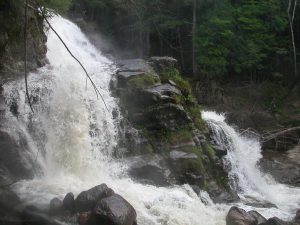
Black Flies play an important role in the ecosystem at each stage in their development. Fish eat the eggs and the larvae. The larvae eat organic vegetable debris, breaking it down and filtering it for other organisms. Once the adults emerge, they become food for fish, birds, toads, bats, and other insects. The late spring swarms emerge at a particularly opportune time for nesting birds. Black Flies feed on plant nectar and are important for pollination.
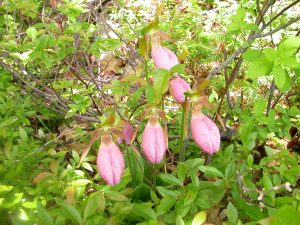
While Black Flies make it unpleasant to be in the woods, they also creep into the villages, albeit in smaller numbers, and make it impossible to work in the garden (for me anyway). Most town districts use a pesticide to reduce the population of Black Flies. In early spring a chemical is released in streams that prevents Black Fly larvae from maturing. While this chemical is highly selective, affecting only one other (non-endangered) species, I don’t agree with this practice, since Black Flies are a critical foundation to the overall ecology. Fortunately Black Fly control is a daunting task in a place with as much water as the Adirondacks, and control efforts are always incomplete.
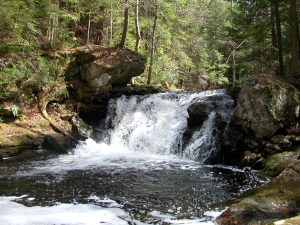
Bug repellants don’t work well against Black Flies. DEET supposedly works somewhat, but I wouldn’t know about that since I won’t use it. My strategies for hiking in Black Fly season are 1) to walk quickly and stay ahead of them, stopping only on open ledges where a breeze keeps them away; 2) to hike midday when there are fewer swarming; and 3) to wear long pants, pack a lightweight long-sleeve shirt, and bring a head net. A head net is a piece of nylon netting worn over a ballcap and cinched at the bottom. It interferes slightly with vision, but when the bugs are at their worst it’s worth the nuisance. I was once with a group on Nun-da-ga-o Ridge where the Black Flies were so bad we had to eat our sandwiches under our head nets.
Despite the consensus that Black Flies are a nuisance, many people respect these creatures for their fierceness and tenacity. A local softball team calls itself The Black Flies. A grueling mountain bike race calls itself The Black Fly Challenge. A local nursery calls itself Black Fly Organics. Many residents are proud of their ability to live with the Black Flies, viewing it as a badge of toughness.
Black flies are picky about where they lay their eggs, so the best thing about the early summer onslaught is what it tells us about the ecosystem we share with them: that water is plentiful and very very clean.
A few glitches with my website last week, but everything’s fixed. I moved from one SSL provider (the thing that puts the “s” in https://) to another, and I expected some issues to arise, but they were thornier than predicted. The site was never compromised (and I’m not selling anything through this site anyway), but web browsers, especially Google, like to flag things.
Bugs have started coming out, so I don’t know how much longer I’ll be taking pictures. These are from three separate hikes this past week.
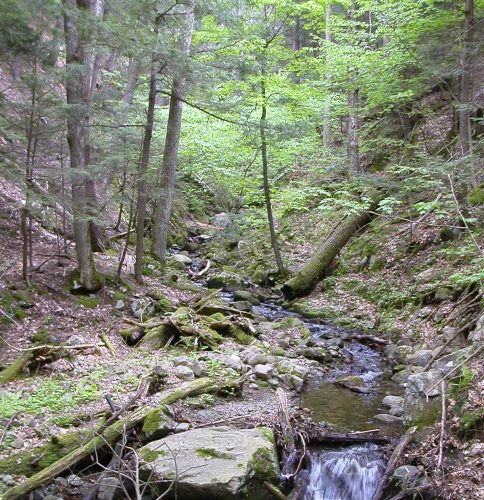
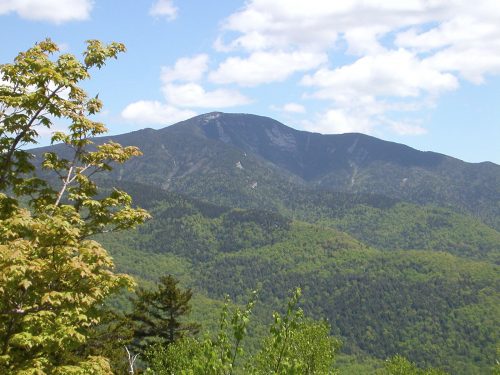
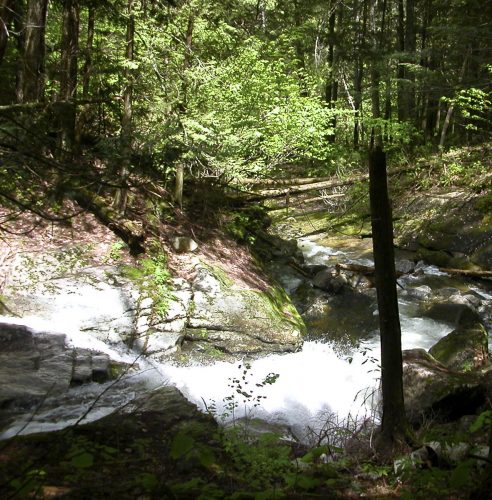
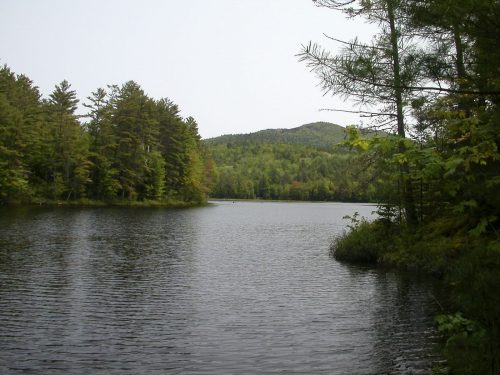
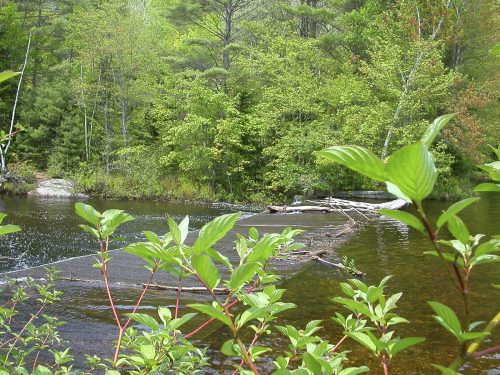
Trees are starting to bud where I live, and the birds have arrived. I went to Crown Point this week to watch the birds being banded. I’ve driven over the Crown Point Bridge hundreds of times but have never stopped here.
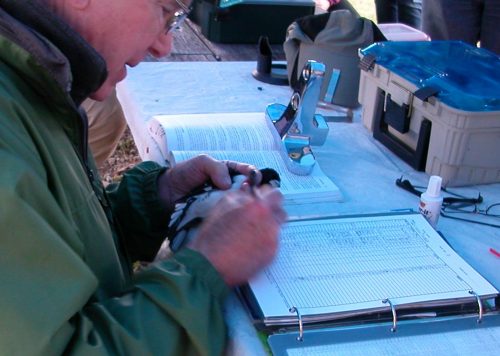
Banding a Rose Breasted Grosbeak. Birds are measured, then sex and age is recorded.
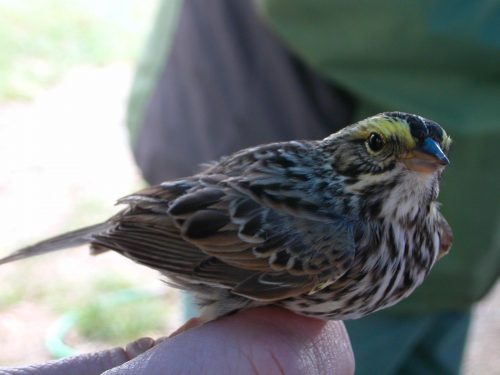
Savannah Sparrow.
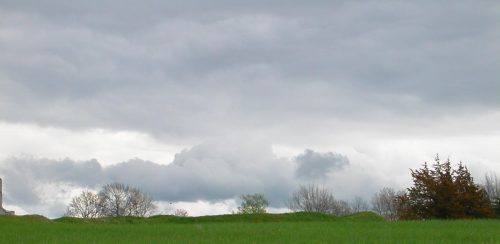
It had rained early in the morning, and the cloud shapes were interesting.
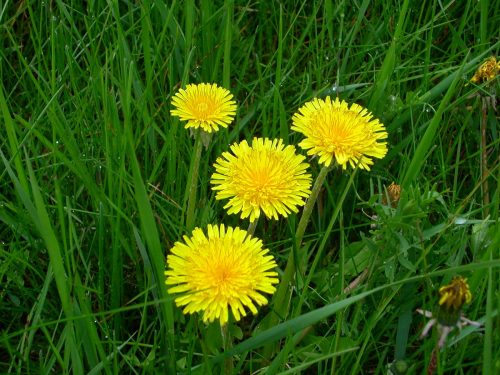
After the long winters here, even dandelions are beautiful.

I liked this tree. Spring is unrolling slowly this year.

Crown Point Bridge from New York to Vermont.

It has finally begun to feel like spring where I live, even though it was snowing this morning when I arose. The trees are not leafing yet, but the maples are budding, and animal life is conspicuous. In the past week, I have seen or heard the Barred Owl, Short-eared Owl, Cooper’s Hawk, Broad-winged Hawk, Osprey, Pileated Woodpecker, and the drumming wing feathers of the courting Ruffed Grouse.
One particularly welcome sight was a Little Brown Bat that sailed by my left shoulder on a dirt road near the village. I haven’t seen spring daytime bats in years. When the Little Brown Bat emerges from hibernation, she hunts during the day for insects which are inactive at night in cool weather. I used to see groups of bats flittering in the midday sun in early spring, but that changed years ago. White-nose Syndrome was first discovered in upstate New York in 2007 and has since spread throughout North America. A few species are predicted to become extinct, though the Little Brown Bat has a chance since her numbers were so high and her colonies so widespread to begin with.
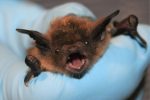
I hoped that this was a sign that the disease has run its course and the Little Brown Bat is recovering, but my Internet search only revealed that White-nose is spreading to places far from the original sighting, like southern Texas. Still, I might be one of the first to notice signs of recovery, if that is occurring. “One swallow does not a summer make,” and one bat is not a colony, but I am hopeful.
Autumn colors passed their peak about a week ago. The best fall foliage happens at an early cold autumn. This year it stayed warm very late (something I’m not complaining about, after last winter!). Even in an off year, it’s still pretty. I went out several times but had trouble getting pictures because it kept raining and I didn’t want to get my camera wet. Anyway, here it is.
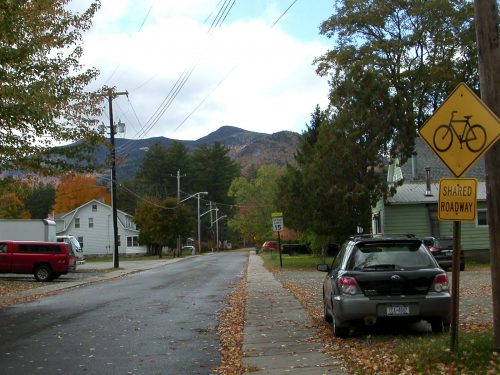
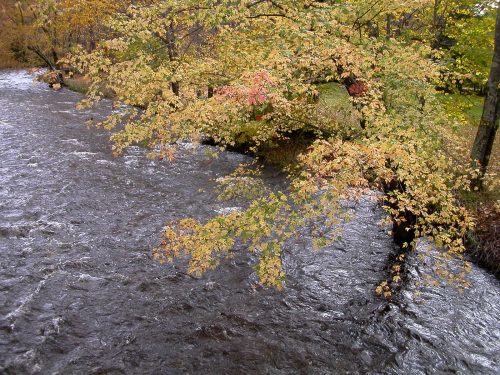
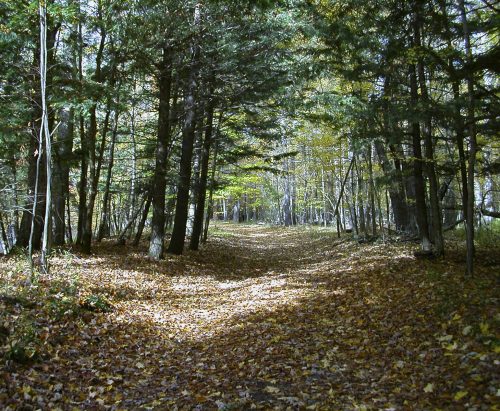
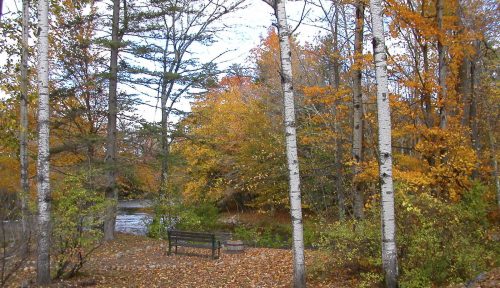

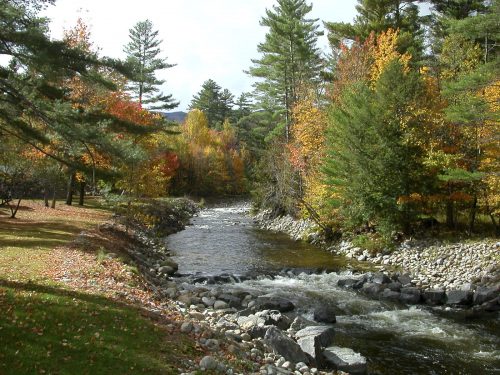
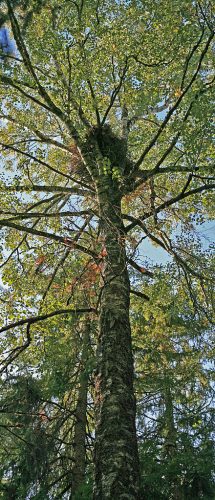
Well, the goshawks, reportedly, have flown the nest. The trail is open and people report traveling unmolested. Not sure when I’ll walk that path alone again.
I heard reports last month of two other trails in the county where Northern Goshawks were threatening mountain bikers. The prevalence of goshawks in the Adirondacks has been a matter of speculation for years, with one theory being that they are too shy to give an accurate count. But now it seems that for one month out of the year they are more than willing to make their presence known. I wonder if numbers are recovering or if we’re having an irruption. Time will tell.
Here are some fun facts I learned about the Northern Goshawk.
1) They have such strong talons and are so aggressive that they’ve been known to pierce bicycle helmets in attack.
2) They hunt starlings, which is a major point in their favor. While starlings are famous for their accomplished singing skills, in North America they are an invasive species. Starlings are loud and obnoxious in large groups.
3) Goshawks kill a lot of Blue Jays and keep that native species in check.
4) They like to consume their prey on the ground and don’t have a lot of enemies (unsurprisingly).
5) People are more likely to be attacked when hiking solitary, although this year groups, including groups with dogs, have been attacked.
Things are returning to normal in the village. People are reporting nuisance bears who have learned to open garage doors, but that’s an ongoing problem, and at least the bears run away when they’re confronted.